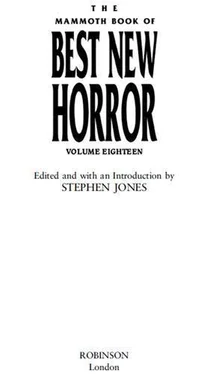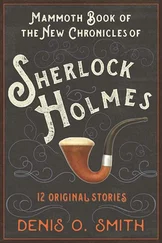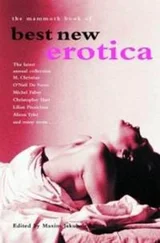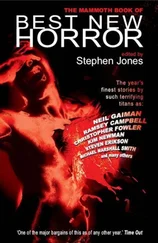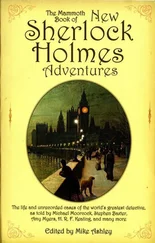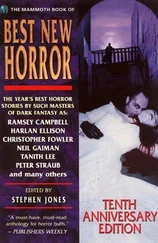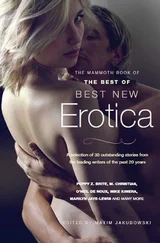Stephen (ed.) - The Mammoth Book of Best New Horror 18
Здесь есть возможность читать онлайн «Stephen (ed.) - The Mammoth Book of Best New Horror 18» весь текст электронной книги совершенно бесплатно (целиком полную версию без сокращений). В некоторых случаях можно слушать аудио, скачать через торрент в формате fb2 и присутствует краткое содержание. Жанр: Старинная литература, на английском языке. Описание произведения, (предисловие) а так же отзывы посетителей доступны на портале библиотеки ЛибКат.
- Название:The Mammoth Book of Best New Horror 18
- Автор:
- Жанр:
- Год:неизвестен
- ISBN:нет данных
- Рейтинг книги:3 / 5. Голосов: 1
-
Избранное:Добавить в избранное
- Отзывы:
-
Ваша оценка:
- 60
- 1
- 2
- 3
- 4
- 5
The Mammoth Book of Best New Horror 18: краткое содержание, описание и аннотация
Предлагаем к чтению аннотацию, описание, краткое содержание или предисловие (зависит от того, что написал сам автор книги «The Mammoth Book of Best New Horror 18»). Если вы не нашли необходимую информацию о книге — напишите в комментариях, мы постараемся отыскать её.
The Mammoth Book of Best New Horror 18 — читать онлайн бесплатно полную книгу (весь текст) целиком
Ниже представлен текст книги, разбитый по страницам. Система сохранения места последней прочитанной страницы, позволяет с удобством читать онлайн бесплатно книгу «The Mammoth Book of Best New Horror 18», без необходимости каждый раз заново искать на чём Вы остановились. Поставьте закладку, и сможете в любой момент перейти на страницу, на которой закончили чтение.
Интервал:
Закладка:
But they weren’t temples: they were homes. Someone had paid an artist, or teams of artists, to paint frescoes on the walls of room after room after room. Sea daffodils, swallows; dolphins and pleasure boats, the boats themselves decorated with more dolphins and flying seabirds, golden nautilus on their prows. Wreaths of flowers. A shipwreck. Always you saw the same colors, ochre-yellow and ferrous red; a pigment made by grinding glaucophane, a vitreous mineral that produced a grey-blue shimmer; a bright pure French blue. But of course it wasn’t French blue but Egyptian blue – Pompeiian blue – one of the earliest pigments, used for thousands of years; you made it by combining a calcium compound with ground malachite and quartz, then heating it to extreme temperatures.
But no green. It was a blue and gold and red world. Not even the plants were green.
Otherwise, the paintings were so alive that, when she’d first seen them, she half-expected her finger would be wet if she touched them. The eyes of the boys who played at boxing were children’s eyes. The antelopes had the mad topaz glare of wild goats. The monkeys had blue fur and looked like dancing cats. There were people walking in the streets. You could see what their houses looked like, red brick and yellow shutters.
She turned towards the back of the book, to the section on Xeste 3. It was the most famous building at the site. It contained the most famous paintings – the woman known as the “Mistress of Animals.” “The Adorants,” who appeared to be striding down a fashion runway. “The Lustral Basin.”
The saffron gatherers.
She gazed at the image from the East Wall of Room Three, two women harvesting the stigma of the crocus blossoms. The flowers were like stylized yellow fireworks, growing from the rocks and also appearing in a repetitive motif on the wall above the figures, like the fleur-de-lis patterns on wallpaper. The fragments of painted plaster had been meticulously restored; there was no attempt to fill in what was missing, as had been done at Knossos under Sir Arthur Evans’ supervision to sometimes cartoonish effect.
None of that had not been necessary here. The fresco was nearly intact. You could see how the older woman’s eyebrow was slightly raised, with annoyance or perhaps just impatience, and count the number of stigmata the younger acolyte held in her outstretched palm.
How long would it have taken for them to fill those baskets? The crocuses bloomed only in autumn, and each small blossom contained just three tiny crimson threads, the female stigmata. It might take 100,000 flowers to produce a half-pound of the spice.
And what did they use the spice for? Cooking; painting; a pigment they traded to the Egyptians for dyeing mummy bandages.
She closed the book. She could hear distant sirens, and a soft hum from the ceiling fan. Tomorrow they would look at houses.
For breakfast they went to the Embarcadero, the huge indoor market inside the restored ferry building that had been damaged over a century before, in the 1906 earthquake. There was a shop with nothing but olive oil and infused vinegars; another that sold only mushrooms, great woven panniers and baskets filled with tree-ears, portobellos, fungus that looked like orange coral; black morels and matsutake and golden chanterelles.
They stuck with coffee and sweet rolls, and ate outside on a bench looking over the Bay. A man threw sticks into the water for a pair of black labs; another man swam along the embankment. The sunlight was strong and clear as gin, and nearly as potent: it made Suzanne feel lightheaded and slightly drowsy, even though she had just gotten up.
“Now,” said Randall. He took out the newspaper, opened it to the real estate section, and handed it to her. He had circled eight listings. “The first two are in Oakland; then we’ll hit Berkeley and Kensington. You ready?”
They drove in heavy traffic across the Oakland-Bay bridge. To either side, bronze water that looked as though it would be too hot to swim in; before them the Oakland Hills, where the houses were ranged in undulating lines like waves. Once in the city they began to climb in and out of pocket neighborhoods poised between the arid and the tropic. Bungalows nearly hidden beneath overhanging trees suddenly yielded to bright white stucco houses flanked by aloes and agaves. It looked at once wildly fanciful and comfortable, as though all urban planning had been left to Dr Seuss.
“They do something here called ‘staging’,” said Randall as they pulled behind a line of parked cars on a hillside. A phalanx of realtors’ signs rose from a grassy mound beside them. “Homeowners pay thousands and thousands of dollars for a decorator to come in and tart up their houses with rented furniture and art and stuff. So, you know, it looks like it’s worth three million dollars.”
They walked to the first house, a Craftsman bungalow tucked behind trees like prehistoric ferns. There was a fountain outside, filled with koi that stared up with engorged silvery eyes. Inside, exposed beams and dark hardwood floors so glossy they looked covered with maple syrup. There was a grand piano, and large framed posters from Parisian cafés – Suzanne was to note a lot of these as the afternoon wore on – and much heavy dark Mediterranean-style furniture, as well as a few early Mission pieces that might have been genuine. The kitchen floors were tiled. In the master bath, there were mosaics in the sink and sunken tub.
Randall barely glanced at these. He made a beeline for the deck. After wandering around for a few minutes, Suzanne followed him.
“It’s beautiful,” she said. Below, terraced gardens gave way to stepped hillsides, and then the city proper, and then the gilded expanse of San Francisco Bay, with sailboats like swans moving slowly beneath the bridge.
“For four million dollars, it better be,” said Randall.
She looked at him. His expression was avid, but it was also sad, his pale eyes melancholy in the brilliant sunlight. He drew her to him and gazed out above the treetops, then pointed across the blue water.
“That’s where we were. Your hotel, it’s right there, somewhere.” His voice grew soft. “At night it all looks like a fairy city. The lights, and the bridges . . . You can’t believe that anyone could have built it.”
He blinked, shading his eyes with his hand, then looked away. When he turned back his cheeks were damp.
“Come on,” he said. He bent to kiss her forehead. “Got to keep moving.”
They drove to the next house, and the next, and the one after that. The light and heat made her dizzy; and the scents of all the unfamiliar flowers, the play of water in fountains and a swimming pool like a great turquoise lozenge. She found herself wandering through expansive bedrooms with people she did not know, walking in and out of closets, bathrooms, a sauna. Every room seemed lavish, the air charged as though anticipating a wonderful party; tables set with beeswax candles and bottles of wine and crystal stemware. Counter-tops of hand-thrown Italian tiles; globular cobalt vases filled with sunflowers, another recurring motif.
But there was no sign of anyone who might actually live in one of these houses, only a series of well-dressed women with expensively restrained jewelry who would greet them, usually in the kitchen, and make sure they had a flyer listing the home’s attributes. There were plates of cookies, banana bread warm from the oven. Bottles of sparkling water and organic lemonade.
And, always, a view. They didn’t look at houses without views. To Suzanne, some were spectacular; others, merely glorious. All were more beautiful than anything she saw from her own windows or deck, where she looked out onto evergreens and grey rocks and, much of the year, snow.
Читать дальшеИнтервал:
Закладка:
Похожие книги на «The Mammoth Book of Best New Horror 18»
Представляем Вашему вниманию похожие книги на «The Mammoth Book of Best New Horror 18» списком для выбора. Мы отобрали схожую по названию и смыслу литературу в надежде предоставить читателям больше вариантов отыскать новые, интересные, ещё непрочитанные произведения.
Обсуждение, отзывы о книге «The Mammoth Book of Best New Horror 18» и просто собственные мнения читателей. Оставьте ваши комментарии, напишите, что Вы думаете о произведении, его смысле или главных героях. Укажите что конкретно понравилось, а что нет, и почему Вы так считаете.
